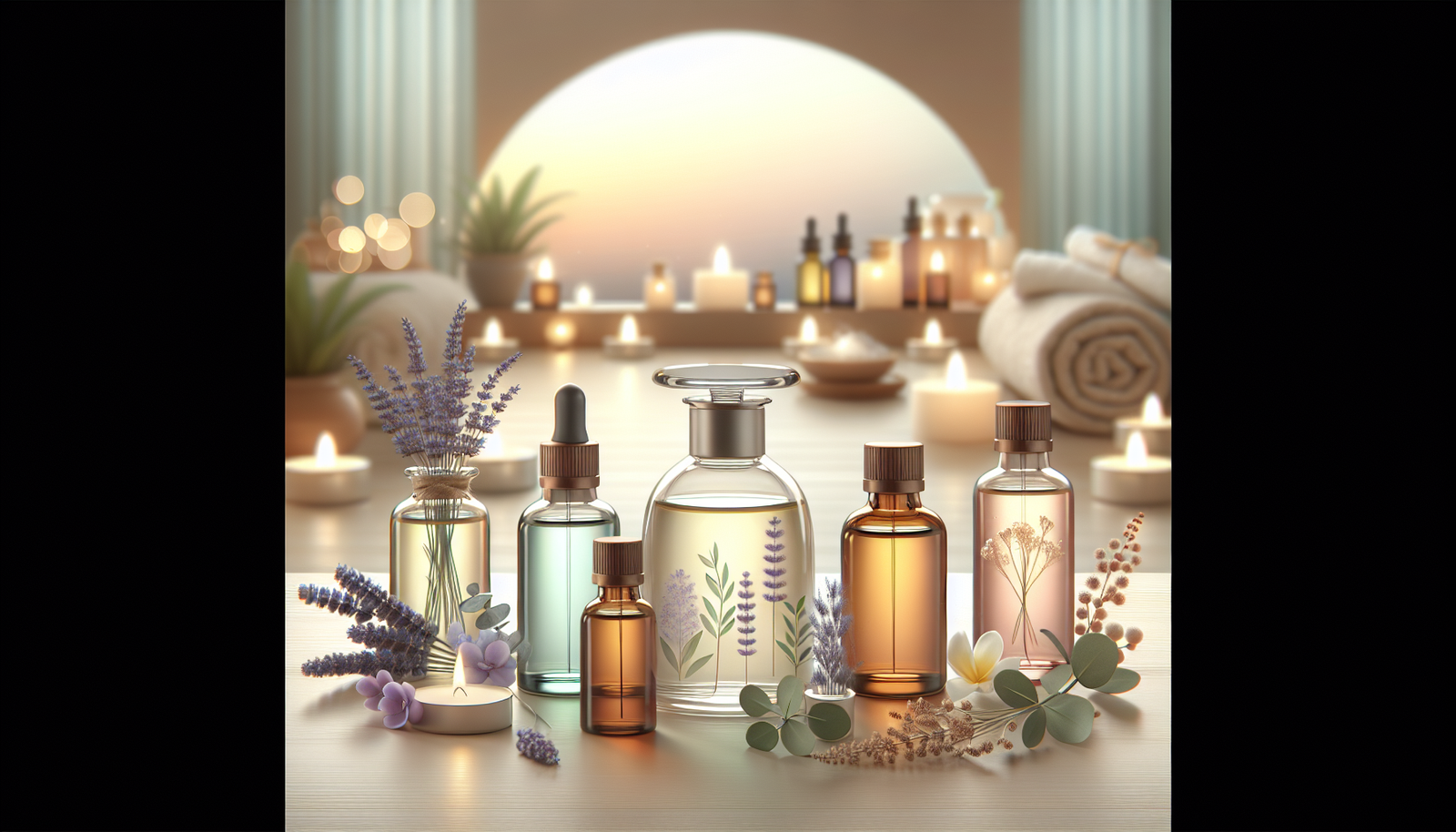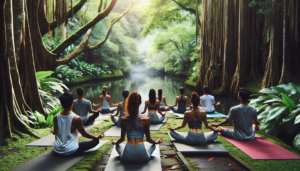Essential Oils for Relaxation: A Guide to Aromatherapy
Essential Oils for Relaxation: A Guide to Aromatherapy
What are Essential Oils?
Essential oils are concentrated plant extracts that capture the essence of their source, encompassing the plant’s scent, flavor, and therapeutic properties. They are derived through processes such as steam distillation, cold pressing, or solvent extraction. Each essential oil boasts unique properties, making them highly sought after in aromatherapy for their potential health benefits.
The Science Behind Aromatherapy
Aromatherapy, a holistic treatment method, utilizes the fragrances of essential oils to promote physical and emotional well-being. The olfactory system directly links the brain’s limbic system, which is responsible for emotion and memory. When inhaled, essential oils can trigger responses that may reduce stress, enhance mood, and promote relaxation.
Popular Essential Oils for Relaxation
-
Lavender Essential Oil
- Extraction Method: Steam distillation from the flowers.
- Benefits: Known for its calming effects, lavender oil reduces anxiety and improves sleep quality. Studies have shown that inhaling lavender oil can lower heart rate and improve mood.
- How to Use: Diffuse in a bedroom before sleep, incorporate in a relaxing bath, or dilute with carrier oil and massage onto the skin.
-
Bergamot Essential Oil
- Extraction Method: Cold-pressed from the peels.
- Benefits: Bergamot is celebrated for its uplifting yet calming properties. It has been associated with reduced anxiety and tension.
- How to Use: Add to a diffuser during meditation or blend it with a carrier oil for topical applications.
-
Chamomile Essential Oil
- Extraction Method: Steam distillation from flowers.
- Benefits: Chamomile is cherished for its anti-inflammatory and soothing properties. It’s particularly effective in promoting restful sleep.
- How to Use: Use in a bedtime ritual by adding a few drops to hot water, creating a calming tea infusion.
-
Frankincense Essential Oil
- Extraction Method: Steam distillation from resin.
- Benefits: Frequently used in spiritual practices, frankincense promotes calm and introspection. It helps reduce stress and negative emotions.
- How to Use: Diffuse during meditation or dilute with carrier oil for use in massage.
-
Ylang Ylang Essential Oil
- Extraction Method: Steam distillation from flowers.
- Benefits: Known for its sweet floral scent, ylang-ylang can help alleviate feelings of stress and anxiety, promoting emotional balance.
- How to Use: Blend with a carrier oil for massage or add to bathwater for a luxurious experience.
-
Sandalwood Essential Oil
- Extraction Method: Steam distillation from heartwood.
- Benefits: Sandalwood is known for its grounding properties. It can help reduce anxiety and promote a meditative state.
- How to Use: Use in essential oil blends for massage or apply in a diffuser during yoga sessions.
- Cedarwood Essential Oil
- Extraction Method: Steam distillation from wood.
- Benefits: Cedarwood has a warm, woodsy aroma that is calming and grounding. It’s often used to alleviate anxiety and promote relaxation.
- How to Use: Mix with a carrier oil for a soothing massage or diffuse during evenings to prepare for sleep.
Methods of Application
-
Diffusion
- Using an essential oil diffuser disperses the oils into the air, creating a relaxing environment. Various diffusers are available, including ultrasonic and nebulizing models.
-
Inhalation
- Simple inhalation of essential oils can be done by adding a few drops to a cotton ball or tissue, or directly inhaling from the bottle.
-
Topical Application
- Always dilute essential oils with a carrier oil (such as coconut, jojoba, or almond oil) before applying to the skin. This method is effective for localized relief; for relaxation, apply on pulse points, neck, or temples.
-
Baths
- Adding a few drops of essential oil to bathwater not only enhances the bathing experience but also allows for the therapeutic benefits to be absorbed through the skin. Ensure to mix with a carrier such as Epsom salts or a milk base to prevent the oil from floating on the surface.
-
Massage
- Incorporating essential oils into massage therapy enhances the physical relaxation process and intensifies the emotional benefits. Mix essential oils with a carrier oil for a soothing, aromatic experience.
- Sprays
- Creating a room spray with essential oils can be an instant way to uplift mood and promote relaxation. Combine distilled water with a few drops of essential oil in a spray bottle for quick use.
Safety Considerations
While essential oils are natural, they must be used with care. Here are some safety tips:
-
Patch Test: Always perform a patch test prior to topical application to check for allergic reactions. Apply a diluted formulation to a small area of skin and observe for 24 hours.
-
Pregnancy and Nursing: Consult a healthcare provider prior to using essential oils during pregnancy or nursing. Some oils may not be safe for use during these periods.
-
Children and Pets: Certain essential oils can be harmful to children and pets. Avoid using oils like tea tree and eucalyptus around these sensitive populations.
- Quality of Oils: Always choose high-quality, therapeutic-grade essential oils from reputable sources. Look for products free of fillers or synthetic ingredients.
Integrating Essential Oils into Daily Life
-
Morning Routine: Start your day with invigorating essential oils like peppermint or citrus oils. Add them to your shower gel or use in a diffuser to awaken your senses.
-
Work Environment: Keep a personal diffuser at your desk with calming oils to maintain a relaxing atmosphere throughout your workday.
-
Evening Ritual: Create a calming bedtime routine by diffusing lavender or chamomile oils to signal your body that it’s time to unwind.
-
Mindfulness and Meditation: Incorporate essential oils into your meditation practice. Use grounding oils like sandalwood to enhance your calming environment.
- Travel: Carry a travel-sized tension relief roll-on with essential oils like lavender and frankincense for use during stressful travel scenarios.
Combining Essential Oils
Blending different essential oils can enhance their properties and create personalized aromatic experiences. Here are a few popular blends for relaxation:
-
Relaxation Blend: Combine lavender, bergamot, and ylang-ylang for a soothing and uplifting experience.
-
Calm & Grounding Blend: Mix cedarwood, sandalwood, and frankincense to create a serene environment ideal for meditation.
- Hero’s Blend: Use geranium, orange, and chamomile for an uplifting yet calming result perfect for after stressful days.
Conclusion of the Informative Guide
This exploration into essential oils for relaxation demonstrates both their versatility and effectiveness in promoting a calming atmosphere beneficial for emotional and physical wellness. Each oil offers distinct properties, and integrating them into your daily routine can elevate your relaxation practices, helping to alleviate stress and foster a peaceful state of mind. Whether used through diffusion, topical application, or added to baths, essential oils serve as a natural gateway to improved well-being.








